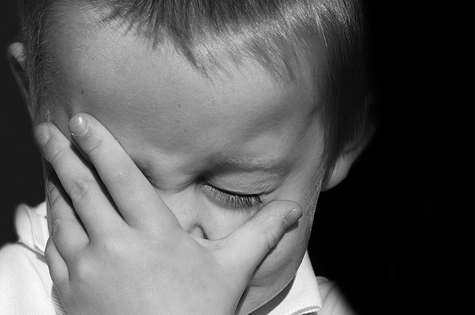Getting a nosebleed can be distressing at the best of times, let alone for young children who can become frightened and confused by what’s happening to them.
A recent survey of Australian adults released by Luminarie found nearly a third of parents believed a classroom nosebleed had caused their child to experience anxiety, with a further one in 10 children anxious about going on a playdate for fear of having a nosebleed. However, pharmacist Nancy To believes nosebleeds are causing more stress to children than they need to. Nancy shares her top tips for treating and managing nosebleeds.
1. Stay calm
When your little one get a nosebleed, it’s important to remain calm and provide lots of reassurance to them. Keep your child upright, most preferably in a sitting position either in your lap or on a chair. Tilt the child’s head forward slightly to prevent the flow of blood to the back of the throat, as the taste of blood can cause further distress.
2. Use the classic pinch and tilt technique
When sitting up-right, tilt your child’s head forward slightly to prevent the flow of blood to the back of the throat. Make sure you are gently pinching the lower soft part of the nose. Hold it firmly for about 10 minutes. It can be helpful to divert your child’s attention to watching television or reading a book to help the time pass faster.
3. Apply a gel treatment for fast, effective relief
Applying a gel treatment, such as Nozohaem*, will stop the nosebleed immediately. The easy to apply gel puts gentle pressure on the blood vessel to aid in clot formation which stops the bleeding. This gel can be self-administered, and is perfectly safe for children as well as pregnant women, and is available at most chemists.
4. Avoid blowing the nose
A lot of us, particularly some children when they’re distressed, will try to blow the blood or the clot out, however this only irritates and prolongs the nosebleed. Reassure your child that the blood will stop without force.
5. Avoid too much physical activity
Once the nose bleed has stopped, keep an eye on them so that rough play or physical exertion can be avoided to prevent the bleed from restarting.
Note: If bleeding continues after 2 x 10 minutes of applying pressure by pinching the nose, it is important to take yourself or your child to the GP. Signs and symptoms to look out for include becoming unusually pale, sweaty or unresponsive.
*Always read the label. Use only as directed. Consult a healthcare professional if symptoms persist. If bleeding continues for more than 30 minutes or if you have any concerns about the cause of your bleeding, consult a healthcare professional.
















__small.png)










